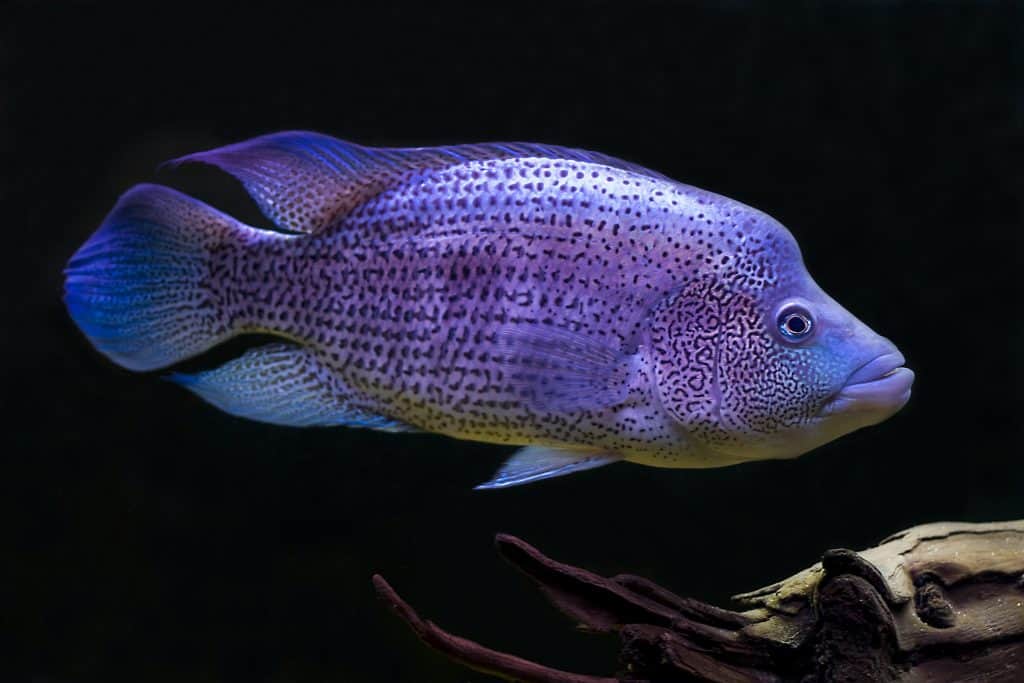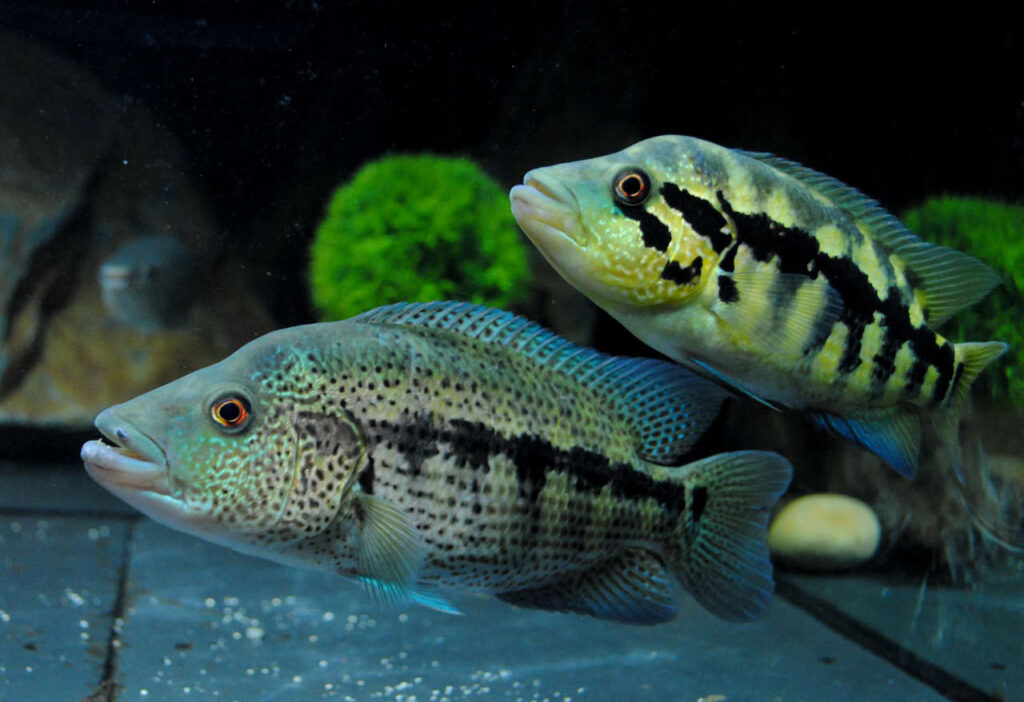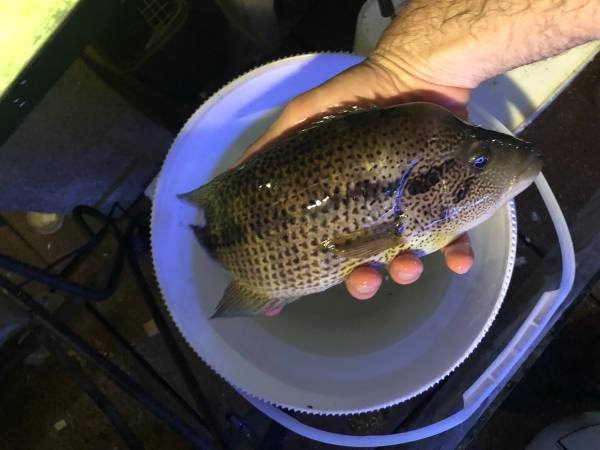The wolf cichlid, also known as the dovii cichlid or Guapote, is a large, aggressive fish that is native to Central America. It is a popular species among experienced aquarium hobbyists due to its impressive size, striking appearance, and unique personality. In this article, we’ll take a closer look at the wolf cichlid, including its physical characteristics, habitat requirements, and behavior.
Physical Characteristics
The wolf cichlid is a large fish that can grow up to 28 inches in length, although most specimens will reach a size of around 18-22 inches. It has a broad, flattened head with a large mouth and sharp teeth that are capable of crushing hard-shelled prey. The body of the wolf cichlid is elongated and muscular, with a distinctive pattern of black and white stripes along the sides.
Habitat Requirements
The wolf cichlid is native to the rivers and lakes of Central America, where it can be found in a variety of habitats, including rocky shores, submerged logs, and areas with dense vegetation. In captivity, it is important to provide the fish with a large tank that mimics its natural environment. A minimum tank size of 150 gallons is recommended, with plenty of hiding places and areas of open water for swimming.
Water quality is also important when keeping wolf cichlids. They prefer slightly acidic water with a pH level of around 6.5-7.5, and a water temperature of 75-82 degrees Fahrenheit. It is important to monitor the water quality regularly and perform regular water changes to keep the tank clean and healthy.
Behavior
Wolf cichlids are known for their aggressive behavior, especially towards other fish. They are territorial and will often attack and kill smaller fish that enter their territory. For this reason, it is recommended to keep wolf cichlids in a species-only tank or with other large, aggressive fish that can hold their own.
Despite their aggressive nature, wolf cichlids can be surprisingly intelligent and even develop a bond with their owners. They are curious fish that will often interact with their owners by following their movements and responding to their presence.
Breeding
Breeding wolf cichlids can be a challenge, but it is possible with the right conditions. It is recommended to keep a breeding pair in a separate tank with plenty of hiding places and areas of open water. The male will often dig a spawning pit in the substrate, where the female will lay her eggs.
The male will guard the eggs and fry, and it is important to provide him with plenty of food to maintain his strength. Once the fry hatch, they can be fed a diet of small live or frozen foods, such as brine shrimp or daphnia.
Conclusion
The wolf cichlid is a fascinating fish that requires a dedicated and experienced owner. While their aggressive behavior can be challenging, they are also intelligent and responsive fish that can develop a bond with their owners. If you are looking for a large, impressive fish that will command attention in your tank, the wolf cichlid is definitely worth considering. However, it is important to do your research and ensure that you are prepared for the demands of keeping this unique and fascinating fish.









![]()
